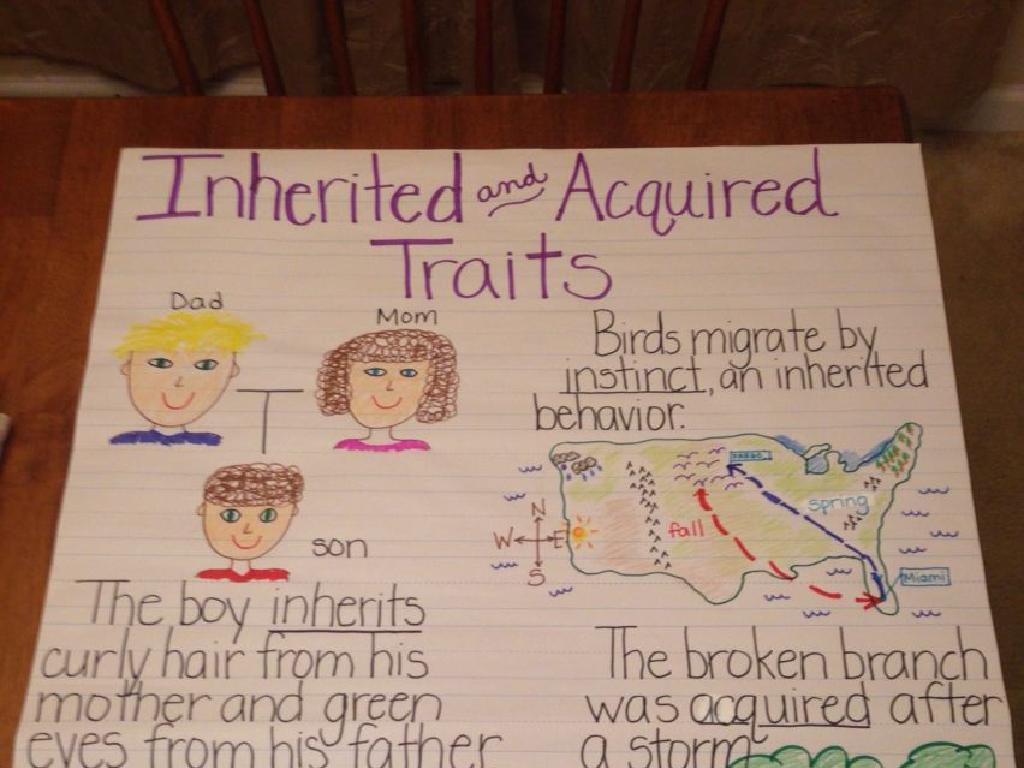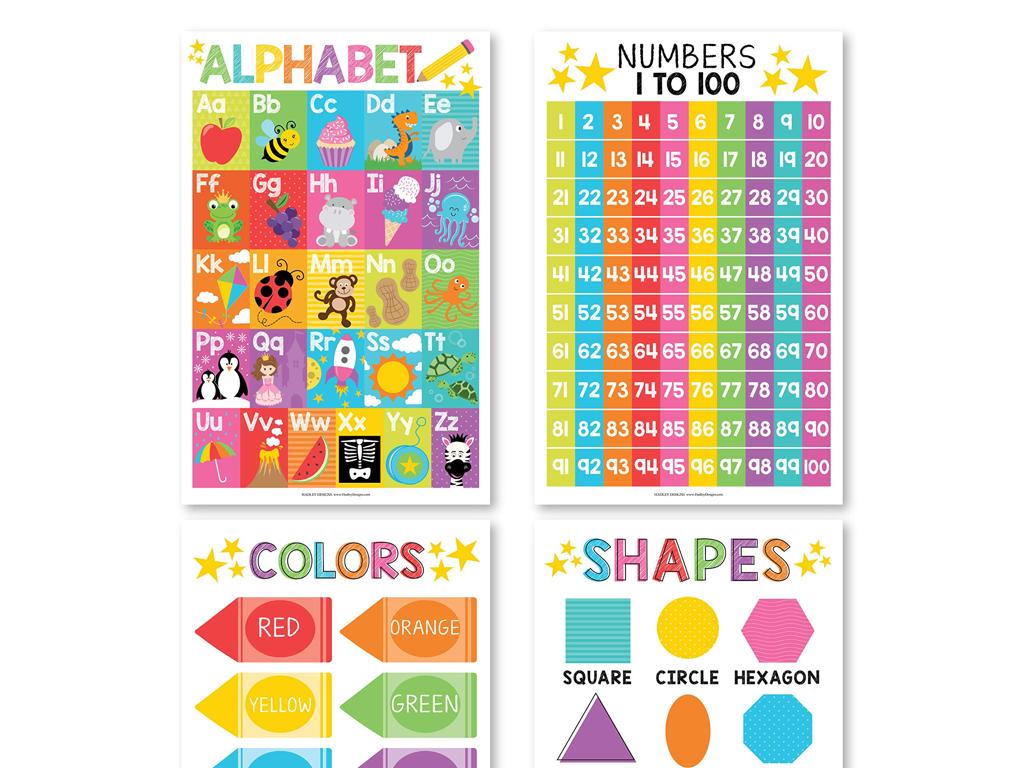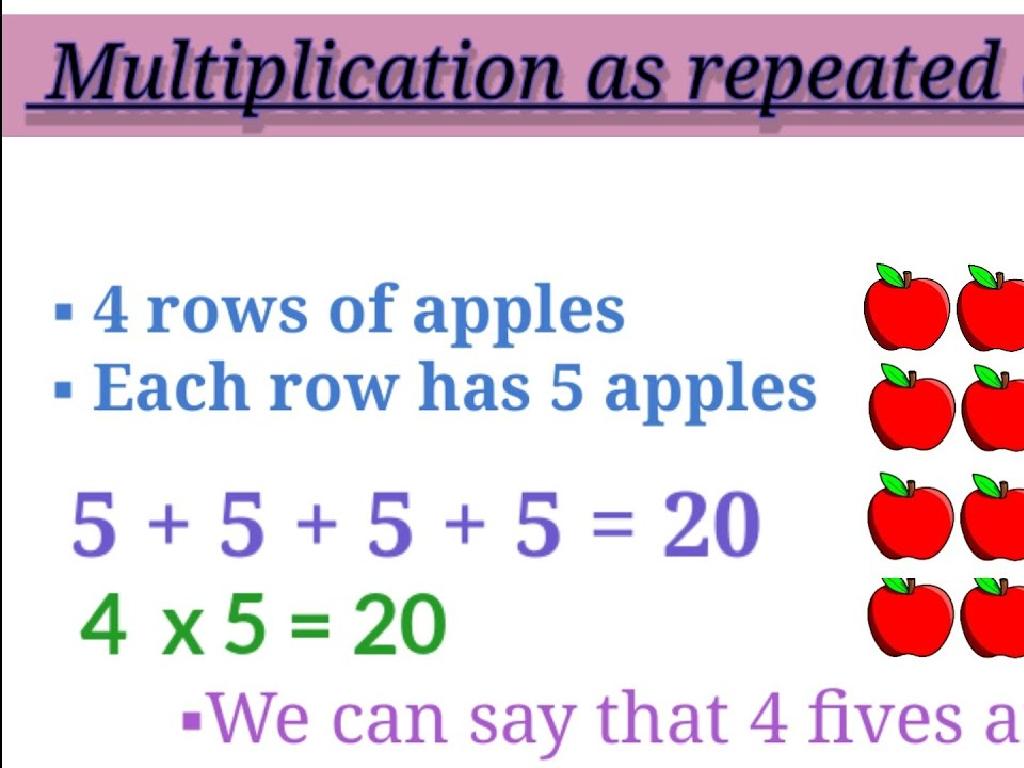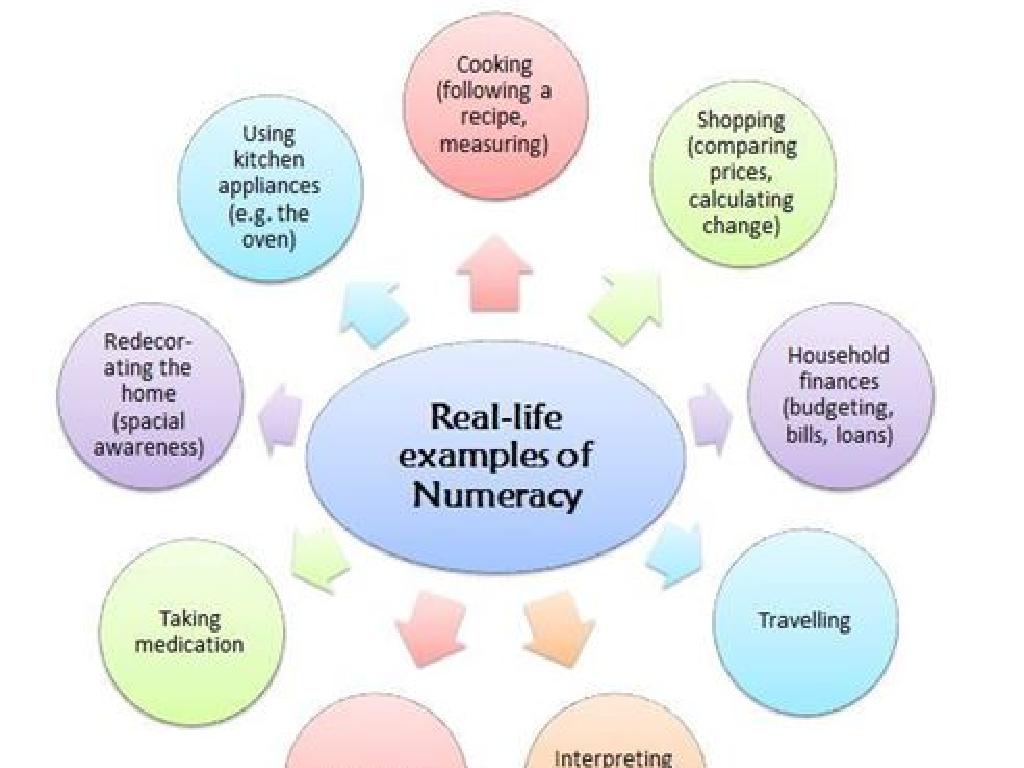Spell The Digraph Word: Ch, Sh, Th
Subject: Language arts
Grade: Second grade
Topic: Consonant Blends And Digraphs
Please LOG IN to download the presentation. Access is available to registered users only.
View More Content
Consonant Blends and Digraphs: Special Sounds
– Learn about special sounds
– Explore ‘ch’, ‘sh’, ‘th’
– ‘ch’ as in ‘chair’, ‘sh’ as in ‘ship’, ‘th’ as in ‘thumb’
– How sounds blend in words
– Words like ‘church’, ‘shell’, ‘bath’ show how sounds blend
– Practice with examples
|
This slide introduces second graders to the concept of consonant blends and digraphs, focusing on the sounds ‘ch’, ‘sh’, and ‘th’. Start by explaining that some letters come together to make special sounds. Use common examples like ‘chair’, ‘ship’, and ‘thumb’ to illustrate each sound. Then, demonstrate how these sounds blend into words they know. Encourage the students to listen for these sounds in words during reading exercises. For the activity, have students practice spelling words with these sounds and create a list of words they find with ‘ch’, ‘sh’, and ‘th’. This will help reinforce their understanding and recognition of consonant blends and digraphs.
Exploring Digraphs: ch, sh, th
– What are digraphs?
– Two letters that combine to make one sound
– Examples: ‘ch’, ‘sh’, ‘th’
– ‘ch’ as in ‘chair’, ‘sh’ as in ‘ship’, ‘th’ as in ‘thumb’
– Common words with digraphs
– ‘chew’, ‘shop’, ‘bath’. Can you think of more?
– Listening for digraph sounds
– Practice by finding words in your favorite book
|
This slide introduces the concept of digraphs to second-grade students, focusing on the sounds ‘ch’, ‘sh’, and ‘th’. Begin by explaining that a digraph is a pair of letters that create a single sound. Provide clear examples using common objects or actions familiar to the students, such as ‘chair’, ‘ship’, and ‘thumb’. Encourage the students to think of other words that contain these digraphs and to listen for these sounds in words they encounter in their reading or daily life. Activities can include a word hunt in class or at home, where students find and list words containing these digraphs, or a listening game where they identify words with these sounds in a story read aloud.
The ‘ch’ Sound in Words
– Learning the ‘ch’ sound
– ‘Ch’ sounds like a train
– Think ‘Choo-Choo!’ like a train
– Words with ‘ch’: chair, cheese
– ‘Chair’ for sitting, ‘cheese’ is yummy
– Practice with ‘cherry’
– Say ‘cherry’ like you’re eating one!
|
This slide introduces the ‘ch’ digraph to second graders, helping them recognize and pronounce the ‘ch’ sound in words. Start by explaining that a digraph is two letters that make one sound. Use the analogy of a train sound, ‘Choo-Choo!’, to help them remember the sound ‘ch’ makes. Provide clear examples with words they are familiar with, such as ‘chair’, ‘cheese’, and ‘cherry’. Encourage the students to repeat the words after you, focusing on the initial ‘ch’ sound. For the activity, have students think of other words that start with ‘ch’ and use them in sentences. This will reinforce their understanding and ability to identify the ‘ch’ sound in different words.
The ‘sh’ Sound in Words
– Listen to the ‘sh’ sound
– ‘Shh’ like when we’re quiet
– Words with ‘sh’: ‘ship’
– ‘Ship’ as in a big boat on water
– More ‘sh’ words: ‘shell’, ‘shoe’
– ‘Shell’ like the beach treasure, ‘Shoe’ we wear on feet
|
This slide introduces the ‘sh’ sound, a common digraph in the English language. Start by having the students make the ‘sh’ sound themselves, emphasizing the sound made when asking for silence. Then, provide examples of words that contain this sound, such as ‘ship’, ‘shell’, and ‘shoe’. Encourage the students to repeat the words after you, focusing on the initial ‘sh’ sound. Ask the students to think of other words that start with ‘sh’ and to share them with the class. This will help reinforce their understanding of the digraph and how it appears in different words. For an engaging activity, consider bringing in objects that have the ‘sh’ sound in their names and have students identify them.
Mastering the ‘th’ Sound
– Learn the ‘th’ sound
– It’s like a soft buzz between your teeth
– Tongue placement is key
– Gently bite down on your tongue and blow air out
– Examples: ‘thumb’, ‘three’, ‘bath’
– ‘Thumb’ (like a big toe for your hand), ‘three’ (number after two), ‘bath’ (a tub of water for washing)
|
This slide focuses on teaching students how to articulate the ‘th’ sound, which is common in English and appears in many words. Emphasize the correct tongue placement by demonstrating and having students practice placing their tongue between their teeth and blowing air out to create the ‘th’ sound. Use visual aids or gestures to show tongue placement. Provide clear examples such as ‘thumb’, ‘three’, and ‘bath’ to help students associate the sound with familiar words. Encourage them to practice these words at home and come up with more examples. During the next class, review the sound and ask students to share additional words they have found that include the ‘th’ sound.
Let’s Practice Spelling Digraphs!
– We’ll spell words as a group
– Listen for ‘ch’, ‘sh’, ‘th’ sounds
– Examples: ‘ch’ as in ‘chair’, ‘sh’ in ‘fish’, ‘th’ in ‘think’
– Practice leads to improvement
– Fun with digraphs
– We’ll play games and use activities to learn
|
This slide is for a class activity focused on practicing the spelling of words with the consonant digraphs ‘ch’, ‘sh’, and ‘th’. Start by engaging the whole class in a group spelling exercise. Emphasize the importance of listening for the specific digraph sounds. Use repetition and various fun activities, such as spelling bees or matching games, to reinforce the learning. Encourage students to practice regularly as this will help them remember the sounds associated with each digraph. Provide positive feedback to build their confidence. For individual activities, students can write sentences using new digraph words, draw pictures of items that include the digraphs, or even create their own digraph word lists.
Digraph Matching Game
– Match digraphs to pictures
– Pronounce each word aloud
– Saying words helps with memorization
– Practice makes perfect
– Repetition aids in recalling digraph sounds
– Have fun learning sounds
|
This slide introduces a class activity focused on digraphs ‘ch’, ‘sh’, and ‘th’. Provide students with a set of pictures and corresponding words that include these digraphs. Students will match each digraph to the correct picture, reinforcing their understanding of the sound each digraph makes. Encourage them to say the words out loud as they make each match, as auditory reinforcement aids memory. This activity can be done individually or in small groups. Possible variations include a timed challenge, matching games with peers, or creating a digraph scavenger hunt around the classroom.
Spell with Me: Digraph Practice
– Fill in blanks with ‘ch’, ‘sh’, ‘th’
– Pair up for word completion
– Work together to figure out which digraph fits.
– Check your partner’s answers
– Take turns reading and correcting.
– Enjoy learning together!
– Make it a fun game with your buddy.
|
This slide introduces a collaborative classroom activity focused on practicing spelling with consonant digraphs ‘ch’, ‘sh’, and ‘th’. Students will work in pairs to fill in the missing digraphs in given words, promoting peer learning and reinforcing their understanding of how these sounds function in words. Teachers should prepare a worksheet with a list of words with missing digraphs for the students to complete. After filling in the blanks, students will check each other’s work, providing immediate feedback and a chance to correct any mistakes. This activity can be gamified to make it more engaging. Possible variations include a timed challenge, scoring system, or a ‘digraph hunt’ where students find words with the target sounds in their favorite books.
Class Activity: Digraph Bingo
– Let’s play Digraph Bingo!
– Listen for digraph words: ch, sh, th
– Words like ‘chair’, ‘ship’, ‘thumb’
– Mark the word on your Bingo card
– Get 5 in a row and shout ‘Bingo!’
|
This interactive activity is designed to help second graders recognize and practice digraph sounds. Prepare Bingo cards in advance with a variety of words containing the ‘ch’, ‘sh’, and ‘th’ digraphs. As you call out words, students will listen for the digraph sounds and mark them on their cards. The first student to align five marked words either vertically, horizontally, or diagonally shouts ‘Bingo!’ and wins. Check the winning card together to ensure the words contain the correct digraphs. Possible variations of the game could include using pictures instead of words for younger students, or challenging students to come up with their own words containing the digraphs after the game.
Wrapping Up: ‘ch’, ‘sh’, ‘th’ Digraphs
– Congratulations on learning ‘ch’, ‘sh’, ‘th’!
– Practice digraphs with family and friends
– Try finding words with ‘ch’, ‘sh’, ‘th’ at home
– Exciting story reading in the next class
– We’ll read a story together and spot the digraphs
– Keep listening for digraph sounds
– Can you hear ‘ch’ in ‘chair’ or ‘sh’ in ‘fish’?
|
Great work today, students! You’ve learned the sounds that ‘ch’, ‘sh’, and ‘th’ make in words. Remember, practicing with people around you can make learning even more fun. For our next class, get ready to dive into a story where you’ll find lots of words with these digraphs. This will help you become superstars at recognizing and reading these sounds. Keep an ear out for these digraphs when you listen to others speak or when you’re reading other books. See you next class for more fun with digraphs!






